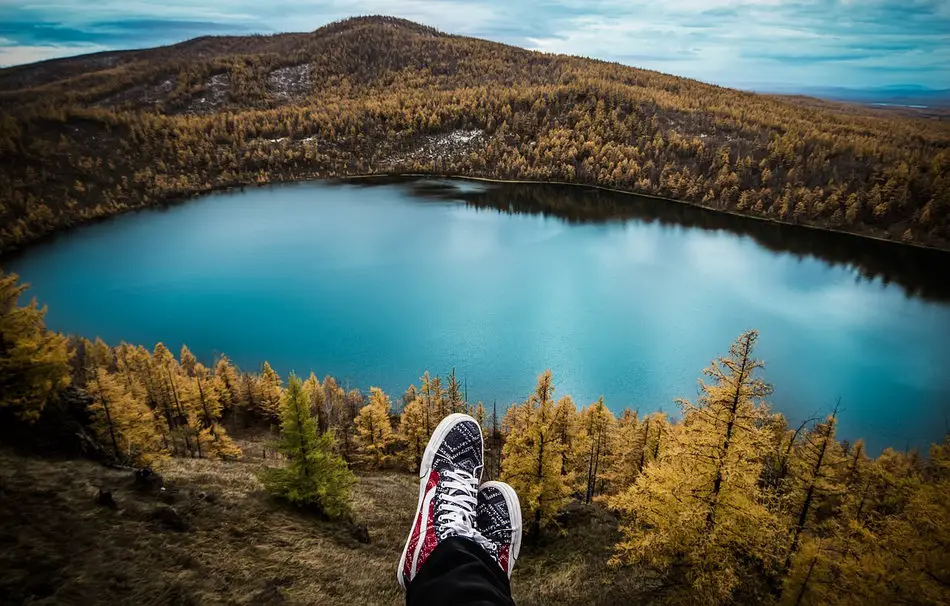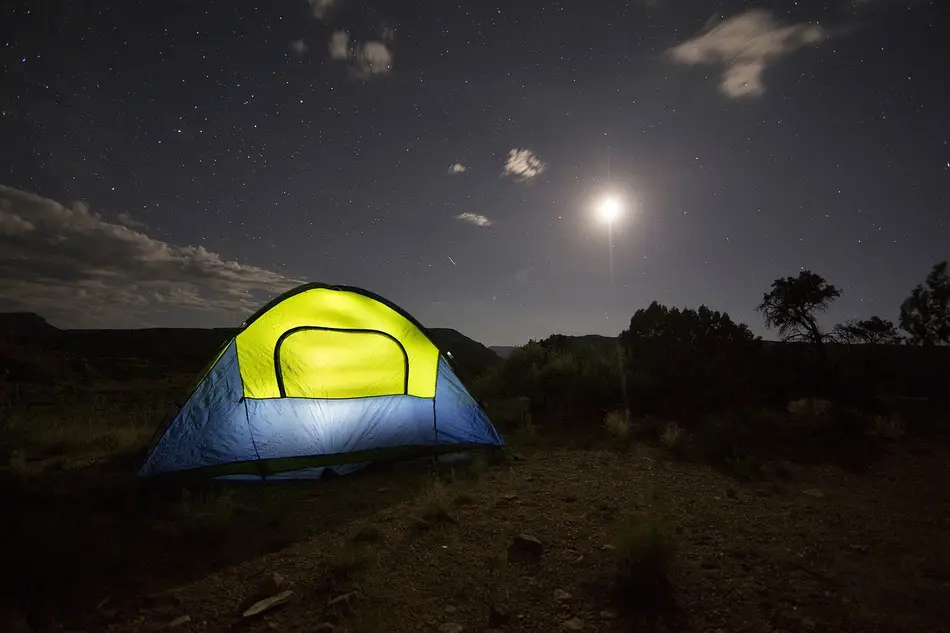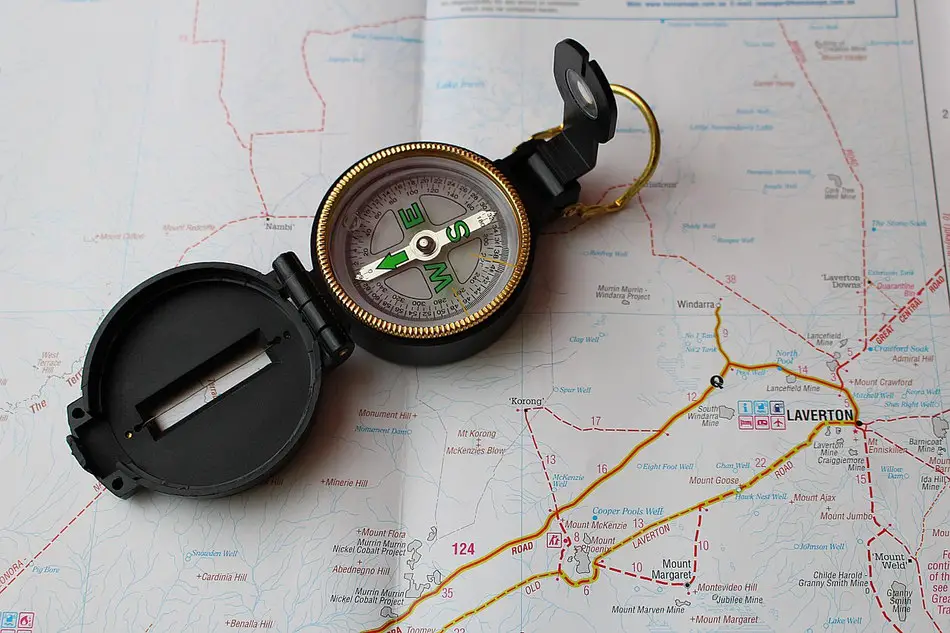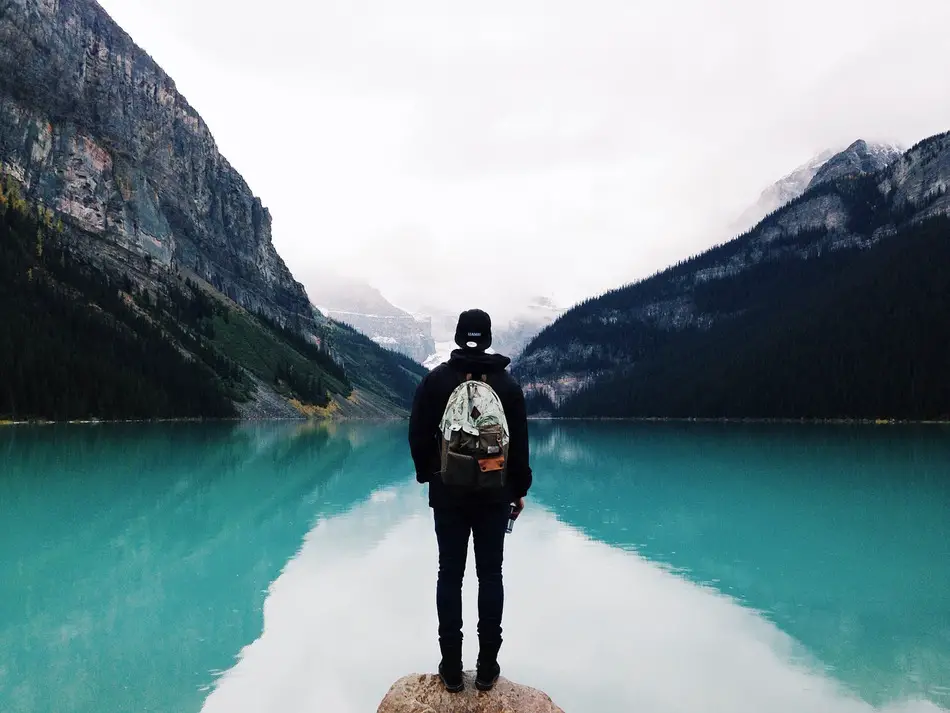Let’s face it: we all love to hike, but not all of us have hiking buddies available whenever we wish to just go out and enjoy a good trek in the nature. And sometimes, you just want to hike on your own, at your personal pace. Hiking partners can be great, but we all have our individual rhythms, needs and desires. A solitude can do good for a soul, especially if experienced during a solo hike. As someone who hikes alone quite a bit, I’ve gathered a few tips that in my opinion could help you. Stay safe out there and let me know if you have more tips based on your experiences.
Follow Safety Rules
This is a general tip that will actually be a major factor in some of the next tips. As I said earlier, I’m all for hiking alone. But you need to be cautious. Safety should be your number one priority. If you are injured or hurt, you are on your own. You need to be skillful enough to avoid life-threatening situations. Moreover, if they can’t be avoided, you will need to be skillful enough to get yourself out of Dodge! Don’t hike alone unless you know where you’re going, unless you’re properly equipped, unless you know how to treat injuries, look for food, and contact emergency services if necessary.
Let Someone Know Where You’re Heading
Yes, we all want to be proud lone wolves, and not little children who need to tell their folks where they are going. But being prudent does not hurt your pride. Just make sure that a friend or a relative is aware about your hiking plans. It is especially important to let them know when you’re intending to return. Should something happen and you don’t return in time, your friends will contact the local authorities and send help. Which also means that you probably shouldn’t change your plans spontaneously and decide on a whim to hike for a longer time.
Check Your Car
For the most of us, the hike does not start from the very moment we leave our house. We actually need to drive to the hiking trails. Therefore, don’t get stuck with an empty battery or a tank when you return to your vehicle after hiking for hours. Be sure that everything is in order even before you leave the city at the beginning. Check the following:
- There is enough gas
- You have a backup battery to charge an empty one.
- The tires have air, and you have an air pump in your trunk (see a personal recommendation below)
- The oil level is OK
- You have spare oil
- You have spare water
Also, your car should be able to handle whatever road leads you to the desired area; some cars don’t handle the dirt roads that well. Keep all that in mind and don’t get stranded in a place with little to no traffic.
Getting back to your car and finding a flat tire is the worst. There is a highly rated item on Amazon, EPAuto 12V DC Portable Air Compressor Pump, that you should always have in the trunk of your car. This little beast will pump any tire, and with the right adapter can even be used on a kayak or a basketball. This air compressor comes with an easy-to-read digital display. It has another extremly useful feature – it prevents over-inflation. Once the desired pressure is reached, the pump turns off. You should really take it with you on your next hiking trip.

Study the Terrain
Your planned hiking path should not feel like a strange land to you. Study the area, familiarize yourself with its flora, fauna, weather. Are there dangerous predators or venomous snakes around? Which plants on your path you can use for food or medicine? What are the temperatures to be expected? Might it rain and flood? What does the weather report say? Try also reading the weather on your own. These all are things that you should seriously take into consideration if you’re hiking on your own.
Another related factor to consider is the closeness to roads and towns. If you’re a hiking newbie and something happens, you should be able to reach other people as fast as possible. Go get a map and get to know the area better, it might save you from some troubles.
Visit the Ranger Station
This is a useful addition to a couple of the previous tips. First of all, you can tell the local ranger about your intentions, where you intend to hike and when you are planning to return. That way you are covered should anything happen to you. And of course, don’t forget to check out when you finish your private journey. Let them know that you are back, so that no one will send a search party.
Additionally, the ranger station is a great place for helpful information. They can tell you a lot about the area, things that you should look out for, or just spots that you should visit and enjoy. Is there a hungry bear wondering the woods, stealing the picnic baskets? A ranger will be able to warn you. I am kidding, of course, with this example, but you get my drift.
Walk the Trail that Others Use
If you are not sure about your surroundings, stick to the popular trails visited by many other hikers. These trails are usually well mapped and maintained, lowering the chances of unwanted surprises. And yes, you might encounter actual people along the way; this will not taint your solo hike. This is not a social gathering or a pub, no one will try to chat you up. You won’t even get a friendly nod. Your solitude will be intact, but your walk will be much safer. And if anything does happen – there are more opportunities to get help from a fellow hiker.
Bring Food and Water
When you hike alone, there is no one who can share a Snickers bar with you. You can only rely on yourself. You will need these basic supplies:
- Water – because you must be hydrated at all times. The golden rule is to have about half a liter (17 ounces) an hour. Multiply this by the number of the hours you plan to hike, add 20% percent to be sure, and you are set. That’s how much water you need to carry. For further reading on this extremely important topic, check out my article on the right amount of water to drink when hiking.
- Food – nothing too heavy on the stomach, make sure it is the food that keeps you energetic and not sleepy. If you don’t plan to start a campfire and cook (which can also be prohibited in some forests and parks), just carry the snacks that you can eat on the go.
Bring Equipment
Here is a list of a bare minimum that you should carry in your backpack besides food and water:
- First aid kit – make sure you know what’s in it and how you can use it. I hope nothing ever happens to you, but you always need to be prepared to treat a wound.
- Clothing – you don’t have to wear all of it, but at least tie a sweater to your backpack. The evening chill might creep up on you. Also wear a hat or a bandana, to cover your head from the relentless sunrays.
- Map – yes, the good old paper map. And yes, we all have our smartphones with their navigational apps, but the phones can run out of juice or lose reception. A map weighs nothing, add it to your equipment just in case. You can print one at home, or get from a ranger station.
If you want additional ideas for a necessary hiking equipment, here is a full list of what you should bring for a hiking trip.
For a shorter list, here is a video about solo hiking equipment from West Coat Elementals:
Bring Personal Items
This one depends on your personal preferences and circumstances, so don’t forget to pack them as well. Some examples are:
- Personal hygiene items
- Prescription glasses
- Prescription medicine that you need to take at certain hours
- Camera
- Book to read when you take a break from walking
- If you hike with a dog, bring their food and water
- Note: I actually do not recommend bringing headphones. It’s not just about listening to the nature and not missing its wonders. You simply need to stay alert and aware about what happens around you.
Always Remain on the Trail
Again, this could sound too boring and cautious for the adventurous types among us, but I can guarantee you that the mapped hiking trails have more than enough to offer the travelers. Steering off the path, especially without any survival and camping skills, is unnecessarily reckless. Being lost in the woods is no joke. Mane people died of exposure, due to severe temperature and weather changes. You can also easily step on some shaky rocks and slide into the oblivion in a spontaneous avalanche.
Besides the damage that an unknown environment can cause to you, you can damage it as well. The plant and animal life is fragile and should be protected, you never know what you’re stepping on and disrupting if you wander off the path. In fact, in many national parks it is strictly prohibited to leave the officially recognized trails. Offenders could get punished by the law.
Here is a video that shows an example of an exciting and beatiful hiking on a national park’s trail:
Set Sensible Personal Limits
I’m no fitness guru, but I know for sure that suddenly pushing your physical limits will not make you lose weight in an instant. You need to know what you are capable of at the moment. In the future, you may challenge yourself even further. Right now, however, be real with yourself – how many miles can you actually trek? Maybe go for a long walk in your neighborhood, test yourself before planning a lengthy hike. Fatigue can undermine the enjoyment of your solo hike. There are many types of hiking, choose the one that suits you the most. Also, there is a difference between hiking in the morning and in the evening – find out what the best time to hike is.
Facing the Psychological Aspects
This solo journey can bring out some unexpected emotions, thoughts and insights. You are on your own, in nature, and it can expose something deep and primal in you. You might surprise yourself for the best, how you handle things and obstacles on your trek, how you can grow and expand just by being there. You cannot always predict how you will react on a psychological level. You might even cry with joy, and that’s perfectly OK. This journey is yours and yours alone, don’t be afraid to explore what you feel while you explore the environment. Nature can be the best and most honest therapist, guru and coach.

Setting a Camp
If you’re planning a really long hike with a long break in the middle, or even to spend the night on the trail, then definitely pack a tent or at least a sleeping bag. Before that, check with the ranger if camping/sleeping in this area is even allowed or recommended. The night life of the woods can drastically differ from the hike during the day.
If you do happen to stay for the night, prepare yourself for another life-changing experience. Sleeping alone in the woods, even near a popular trail, can be challenging and eye-opening. Beyond testing your physical skills to set up a camp, you will test your mental strength. This can be the most primal feeling of all. Alone in the dark, in the forest, noises of the night far and close to you – you might face the same fear that our ancient ancestors did. Or you might just enjoy the whole adventurous thing. Either way, prepare yourself for something unordinary.
One of the best and most popular one-person tents is TETON Sports Outfitter Quick Tent (on Amazon). You can effortlessly set it up in less than a minute and enjoy a safe, dry night. This tent is completely waterproof and it maintains a comfortable inner microclimate. You can even stargaze through the tent’s mesh top. Click the tent’s name or image to read more specifications.
Fear is OK
I have mentioned earlier the emotional side of hiking solo. Every hiking path is different. A safe road in a national park is probably not the setting that will bring out the heavier emotions. A more challenging and unknown road could scare you at first – or even on the tenth time that you travel there. Just know that fear is natural. You can be scared if you have no idea what lies ahead of you. Or you can be scared if there is something dangerous or harmful is about to happen. Don’t fear the fear, it’s your evolutionarily justified response that warns you and prepares you. Cooperate with it and act accordingly to the situation.
Counteract Self-Doubt
This can be seen as another variation of fear. This is a fear that overcomes you even before you step outside your house’s comfort zone. “Can I actually do it? Am I prepared enough? What if something happens to me? What if I run out of water? What if I get too tired and won’t be able to come back? What if a bear eats me?”
There are two simple solutions to your self-doubt. First of all, self-education, knowledge, information! Find out for how long you are actually capable of walking, and plan accordingly. Calculate how much water you need. See if there are any bears in that area. And so on. Dive into the answers to all the question that bug and scare you, and make those pangs of uncertainty disappear.
The other solution is just doing it, despite the thoughts in your head. You won’t know the answers to all the “what ifs” until you try leaving your comfort zone and actually take a walk on the wild side. Remember that the pioneers conquered much more dangerous terrains and obstacles, and they were people just like you are.
Bring Tracking Devices

To be more on the safe side, especially if hiking an unfamiliar territory, consider carrying a signaling or tracking widget. An example of such is SPOT Satellite Messenger (on Amazon). This GPS tracker is powered by the Globalstar satellite network. It has much wider global coverage than any cell phone can provide. You can use it to send messages to phones and emails. You can push your location to the emergency services, should anything bad happen. SPOT is responsible for hundreds of rescues worldwide.

DeLorme inReach SE Satellite Tracker (also on Amazon) is another useful device, it lets you send an SOS message to a 24/7 search and rescue hub. It also can track your hiking progress by sending your location every preset number of minutes. It’s just like leaving breadcrumbs, which helps to find you easily, should you get stranded in the wild. It guarantees 100% global coverage, thanks to the Iridium satellite network.

Feel Your Direction
A great way to feel at home in the wild, and not like the proverbial babe in the woods, is knowing your direction. At any given moment you should be able to tell which way is the North and where you are heading. Sometimes it’s enough to know what time of the day it is and where the sun is. Check with your map to ensure you’re still on the planned routes. It also helps to choose a good quality compass. The sense of direction and location will boost your confidence and you will enjoy the rest of the journey.
Start Small
Even if you are physically capable of hiking for hours and days, perhaps you should start from shorter hikes. Get familiar with the sensations and the difficulties that rise along the way. Can you carry the weight of your equipment and supplies for this long? How are you handling being alone for a while? It can be hard at first, so make it into a training. Start small, walk for a couple of miles, get used to everything. With time, you will be able to attempt much longer solo hikes.
Reward Yourself
While the solo hike is a reward of its own, pat yourself on the shoulder each time you achieve something. Bring along some guilty pleasure, like candy or chocolate, and treat yourself a little every 3 miles that you cover. Or even promise yourself some well-deserved ice cream after your return home. This is not an easy task you’re undertaking, this hiking alone thing, so my tip is to reward yourself. You definitely deserve this.
Share and Inspire
After you’re back, consider telling others about what you have experienced. Share a few photos, post a tale that describes what you saw, felt, thought, understood. Not to brag or to get others’ approval, but to inspire. To inspire other people, who are more hesitant than you were, to go out and hike, be it alone or in groups.
Final Words
Despite all the precautions, hiking is fun, as simple as that. You can enjoy nature, enjoy yourself to the fullest, challenge yourself and even experience some personal growth along your path. I should not make a hard sell on how hiking, even alone, can be beneficial to you. I only ask that you take care of yourself. Plan carefully, avoid non-rewarding risks, and get back in one piece, with only the most positive of experiences!




